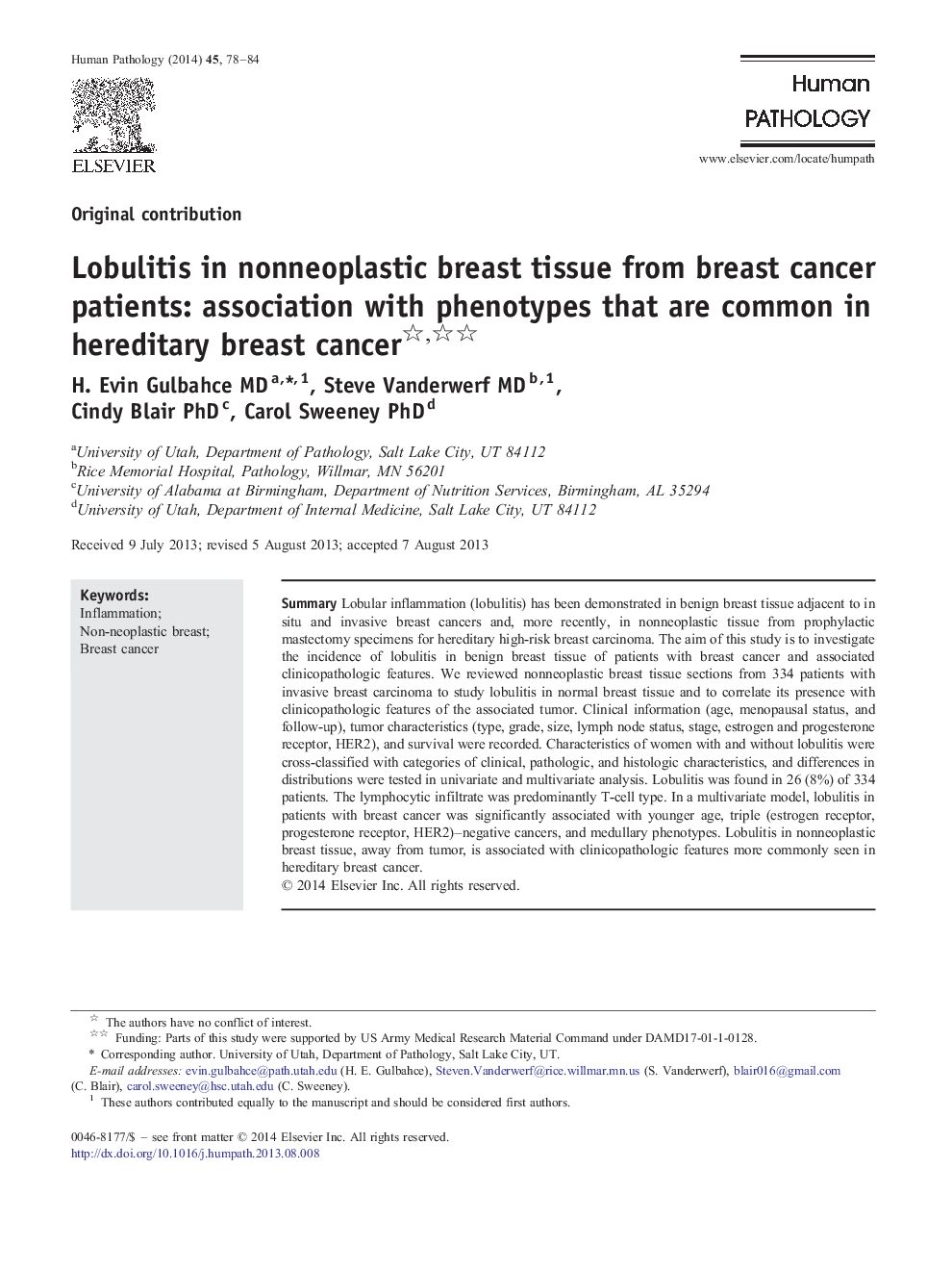| Article ID | Journal | Published Year | Pages | File Type |
|---|---|---|---|---|
| 4133419 | Human Pathology | 2014 | 7 Pages |
SummaryLobular inflammation (lobulitis) has been demonstrated in benign breast tissue adjacent to in situ and invasive breast cancers and, more recently, in nonneoplastic tissue from prophylactic mastectomy specimens for hereditary high-risk breast carcinoma. The aim of this study is to investigate the incidence of lobulitis in benign breast tissue of patients with breast cancer and associated clinicopathologic features. We reviewed nonneoplastic breast tissue sections from 334 patients with invasive breast carcinoma to study lobulitis in normal breast tissue and to correlate its presence with clinicopathologic features of the associated tumor. Clinical information (age, menopausal status, and follow-up), tumor characteristics (type, grade, size, lymph node status, stage, estrogen and progesterone receptor, HER2), and survival were recorded. Characteristics of women with and without lobulitis were cross-classified with categories of clinical, pathologic, and histologic characteristics, and differences in distributions were tested in univariate and multivariate analysis. Lobulitis was found in 26 (8%) of 334 patients. The lymphocytic infiltrate was predominantly T-cell type. In a multivariate model, lobulitis in patients with breast cancer was significantly associated with younger age, triple (estrogen receptor, progesterone receptor, HER2)–negative cancers, and medullary phenotypes. Lobulitis in nonneoplastic breast tissue, away from tumor, is associated with clinicopathologic features more commonly seen in hereditary breast cancer.
